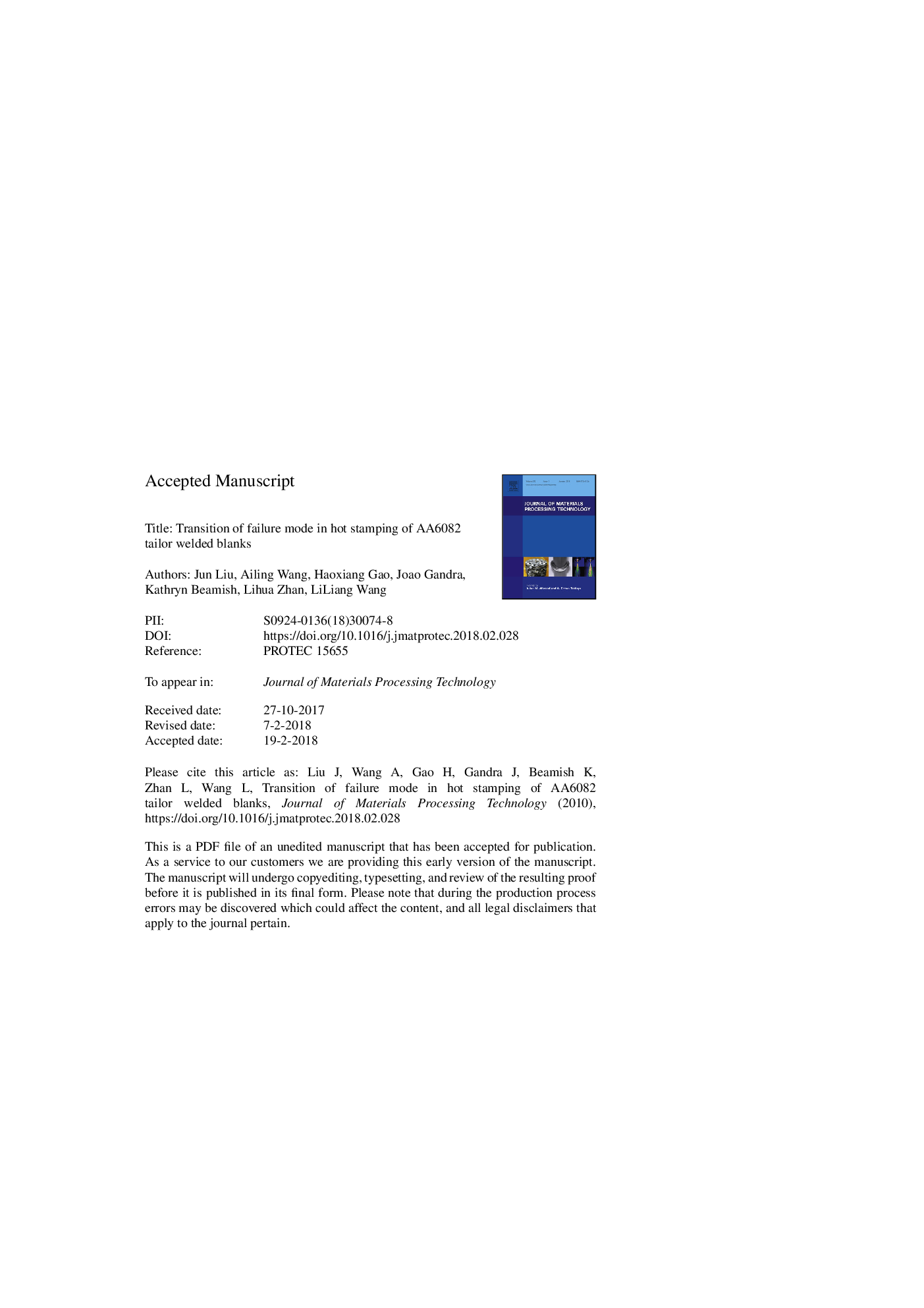| Article ID | Journal | Published Year | Pages | File Type |
|---|---|---|---|---|
| 7176356 | Journal of Materials Processing Technology | 2018 | 31 Pages |
Abstract
A novel sheet metal forming process, by manufacturing parts in a single sheet with varying thickness, has been employed in this work. It combines hot forming and cold-die quenching, also known as HFQ®, and the use of aluminium tailor welded blanks (TWBs) into a hybrid process. A series of hot stamping tests on the AA6082 TWBs were performed to investigate the deformation behaviour and failure features. Two failure modes, i.e. circumferential necking and parallel weld necking have been observed in the formed parts depending on the forming speed and thickness ratio of the TWBs. An advanced forming limit prediction model has been developed and further integrated into finite element simulation via a cloud-based multi-objective platform1 to investigate the failure/necking features of AA6082 TWBs. The model incorporates the theories of Hosford yield function, the anisotropic nature of plastic deformation in sheet metals and the Marciniak-Kaczynski (M-K) theory. According to the theories, the incremental work per unit volume ratio (dε¯BâϯB/dε¯AâϯA) between Zone B (thickness imperfect zone) and Zone A (the remainder of the material) is a key parameter determining the formability, by which the complex failure features have been fundamentally studied. The transition of failure mode in a TWB was attributed to the joint effects of temperature, strain rate and loading path changes. Strain rate could accelerate the development of localised necking in the TWBs when the failure mode was in transition from the circumferential mode to parallel mode.
Related Topics
Physical Sciences and Engineering
Engineering
Industrial and Manufacturing Engineering
Authors
Jun Liu, Ailing Wang, Haoxiang Gao, Joao Gandra, Kathryn Beamish, Lihua Zhan, LiLiang Wang,
